
What’s the point of good manners — of etiquette? To show consideration for others, to make those you come into contact with feel comfortable or at least avoid offending them, and in general to establish common standards of behavior.
What constitutes good or bad manners may seem arbitrary, and the specifics constantly evolve to match societal, cultural, and other changes. However imperfect or inconsistent etiquette might seem, though, it isn’t a matter of raised pinkies and thank-you notes — it’s a framework for smooth and pleasant social intercourse.
There are many kinds of etiquette, of course: golf or tennis etiquette, high society etiquette, workplace etiquette, table etiquette. A longtime specialist in etiquette, The Emily Post Institute, publishes a list of the top ten table manners.
While it’s important to have good manners while eating at home — no burping, no blowing your nose in your napkin, no running off to play before everyone is finished — it’s even more important out in public. Behaving well while we’re out to eat can mean anything from showing up on time to keeping elbows off the table to treating servers well — which is especially easy at the restaurants with the best customer service in America.
The way we behave in restaurants affects not only those at our table but anyone who can see or hear us. That applies whether we’re sharing a communal table at the local Chipotle or enjoying multi-course meals at the best restaurants in America.
Click here for dining-out etiquette rules that should come back
People go to restaurants for fun, for nourishment, for pleasure, and one person’s or party’s blatant disregard of basic good manners can ruin the experience for a whole roomful of diners.
Some rules of restaurant etiquette that were once widely known and observed have been largely forgotten today, as we embrace informality and tend to focus on ourselves more than others. Bringing them back — or practicing them more often — will improve the dining-out experience for us all.
Here are 18 worth remembering and, if they’ve been forgotten, reviving.

1. Arrive on time
If you’re the host at a restaurant dinner, don’t leave your guests sitting alone and possibly awkwardly at the table. If you’re the guest, help the host get things started on time. If you and your dining companion or party arrive together — on time — you can reasonably expect to be seated promptly. If you’re asked to wait for a few minutes while another party pays the check or a table is reset, though, it’s not the end of the world. How long should you wait? That’s an individual choice, but 10 or 15 minutes doesn’t seem unreasonable (especially if the management buys you a drink); 30 minutes or longer does, unless you’ve scored a reservation at the hottest place in town and no amount of inconvenience will turn you away.
[in-text-ad]

2. Don’t take forever with the menu
Some menus are far too long (never a good sign in the first place; how much fresh food can the kitchen really keep on hand?), but even with shorter ones some diners seem incapable of making up their minds. They’ll consider all the possibilities, make a choice, question that choice, ask somebody else’s opinion, disregard it, invite everyone else to order first, and then still hem and haw as the server stands ready. If you’re the indecisive type, try to look at the menu ahead of time, online or posted outside the restaurant. If that’s not possible, don’t treat your dinner order like a major life choice. Just order something you know you like and if it turns out that somebody else ordered something that looks better…well, there’s always a next time.

3. Don’t start eating until everyone is served.
This one is elementary. Dishes don’t always come out of the kitchen at exactly the same time, and you can usually afford to wait two or three minutes until everyone is served. Italians will tell you, not without reason, that one exception to this rule is with risotto, which can turn quickly from a delicious rice dish into a mess of porridge. “The diner waits for the risotto, the risotto doesn’t wait for the diner,” they say. Sometimes, a diner being forced to wait an unreasonably long time for his or her food might say to tablemates “Go ahead and start before it gets cold.” Whether you do or not is an individual decision.
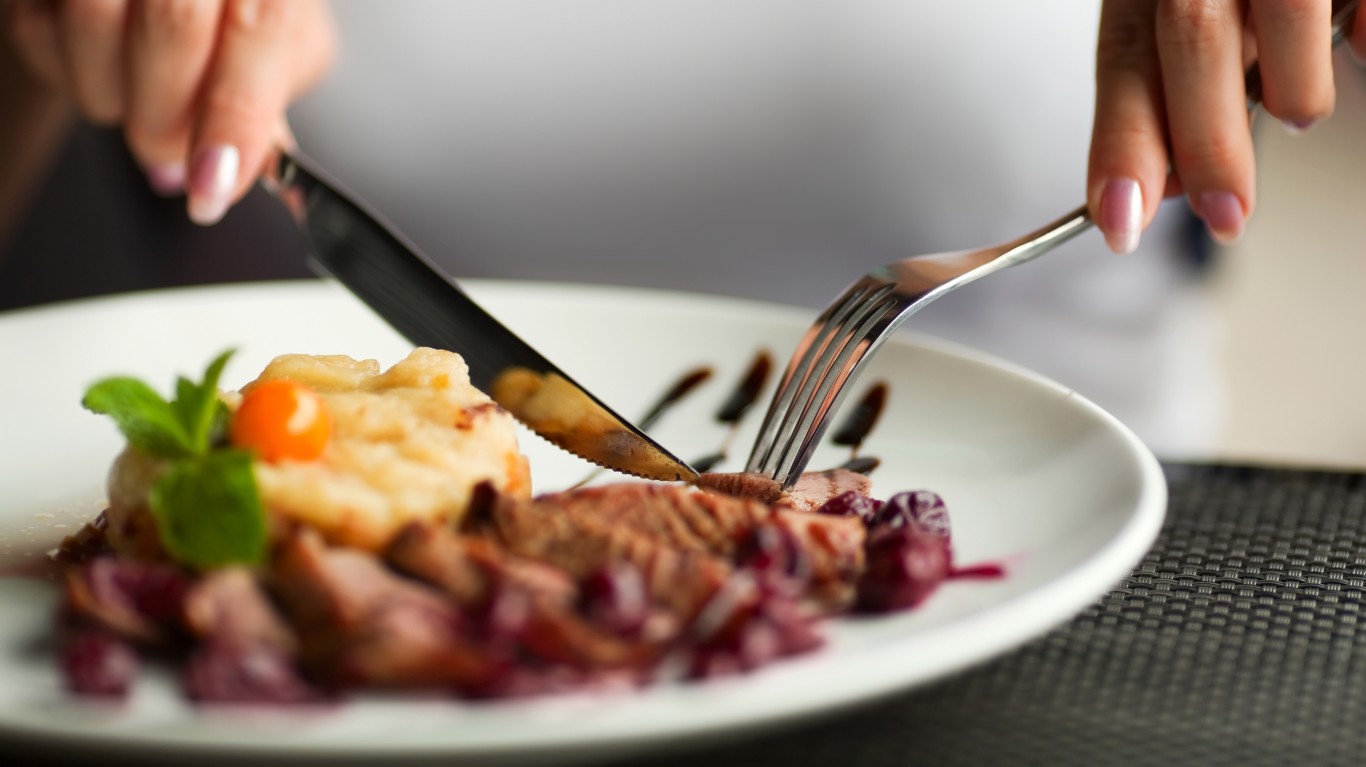
4. Use the right utensils
This really shouldn’t be as daunting as people sometimes make it out to be. Most restaurant tables today are set simply with a fork to the left of the plate and a dinner knife and spoon to the right (or with chopsticks). You can presumably figure that one out. In some fancy restaurants, there may be more than one fork or spoon, in which case start from the outside and work your way in. (The salad fork, for instance, is to the left of the dinner fork, so that’s the one you use for your appetizer salad.) The spoon (and/or sometimes fork) at the top of the plate is for dessert. In some very fancy restaurants, fresh course-specific cutlery is brought with each dish, so that one’s a no-brainer.
[in-text-ad-2]

5. Know the rules for family-style eating
In earlier times, it was mostly Chinese and Italian restaurants that served food on large platters to be shared around the table. Now almost any kind of restaurant might present its offerings that way. This can be a great way to eat — easy, fun, friendly — but it’s important to remember some basic rules: (1.) Pass the platter or bowl counterclockwise. Why? Tradition. The important thing is that food should always go in the same direction to avoid collisions. If you’d rather pass things clockwise, go right ahead; just make sure everybody else knows the drill. (2.) Help yourself with the serving utensils provided, not your own fork or spoon. (3.) Don’t reach across the table for food; wait till it’s passed. (4.) If the group is large and (especially) if the food is dripping with sauce, offer to serve others as they pass their plates your way. (5.) Eyeball the quantity of food served and don’t take more than your share.

6. Keep your elbows off the table
Your mother told you this, and she was right. Why? Your elbows might crowd your tablemates, accidentally nudge a plate or glass, even cause the table to tip in your direction. In addition, you’ll sit up straighter if you’re not leaning in (which looks better than slouching and also aids digestion). Certain foods — like corn on the cob or spare ribs — might be easier to eat in the elbows-on position, so if you’re careful, that might be okay. Otherwise, remember mom.
[in-text-ad]
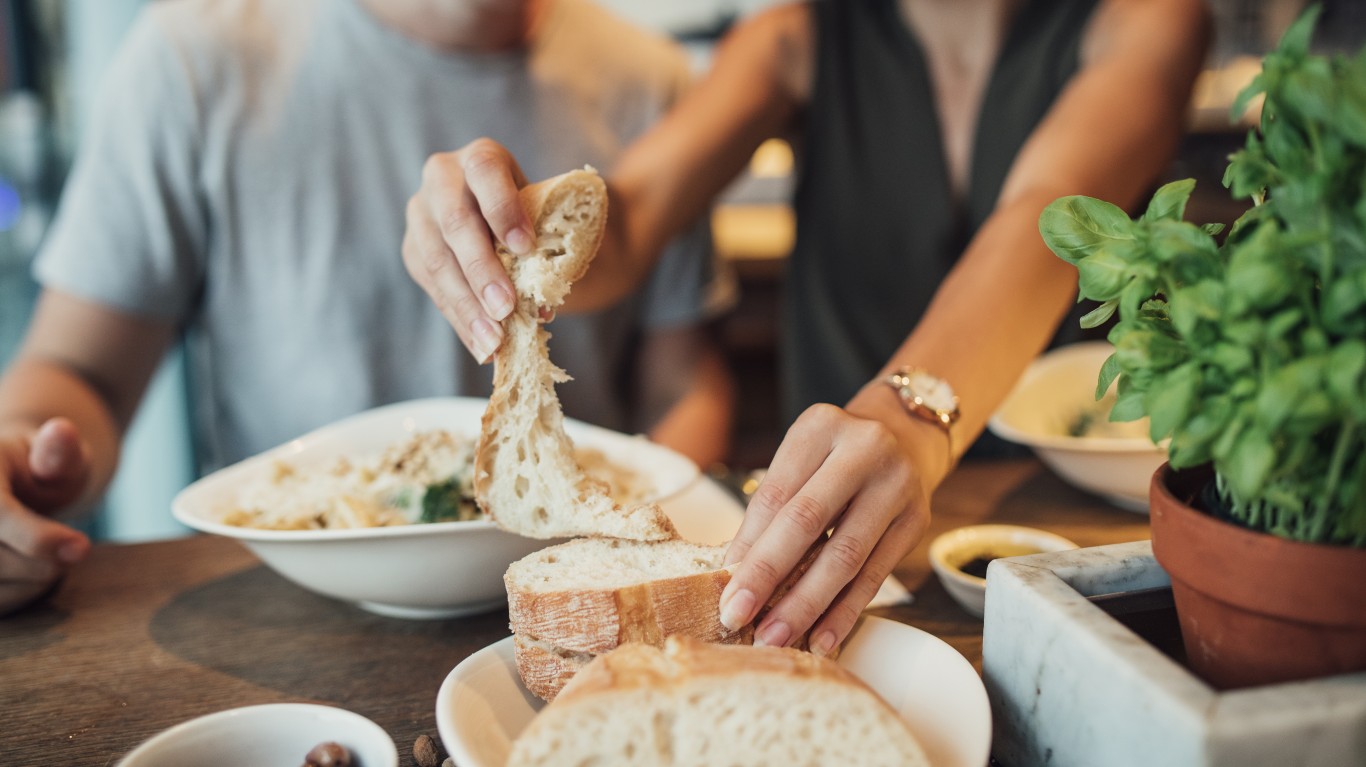
7. Break (don’t cut) your bread
Some restaurants serve a loaf of warm bread on a cutting board with a bread knife, in which case slicing off a piece or two is perfectly correct. If there’s no cutting board or bread knife, though, how are you going to cut the bread? With your butter knife, on the tablecloth or butter plate (which you may end up breaking in the process)? Doesn’t really work. Just take a piece of bread from the breadbasket, tear off a bite-size piece, butter it if you wish, and eat it — then repeat as necessary.

8. Hold wine glasses by the stem
There are several reasons for this: It looks more elegant; you won’t warm up the wine with your body heat; and you won’t get unattractive grease stains on the glass. (Remember that your palms are naturally oily, even if you’ve wiped them clean.)

9. Be nice to the waitstaff
There are admittedly some lazy, incompetent, or just plain dimwitted servers out there, but there are also many, many more who are smart, skilled, and very hard-working. They’re not your servants — they’re people like you who have taken a job helping you to have a pleasant dining experience in order to make a living (see No. 18) and even sometimes just because they like the restaurant world and the people who frequent it. Be polite. Cut them some slack. Compliment them when warranted. In return, at least in most cases, they’ll make your meal more enjoyable — and maybe even give you special attention the next time you come in.
[in-text-ad-2]
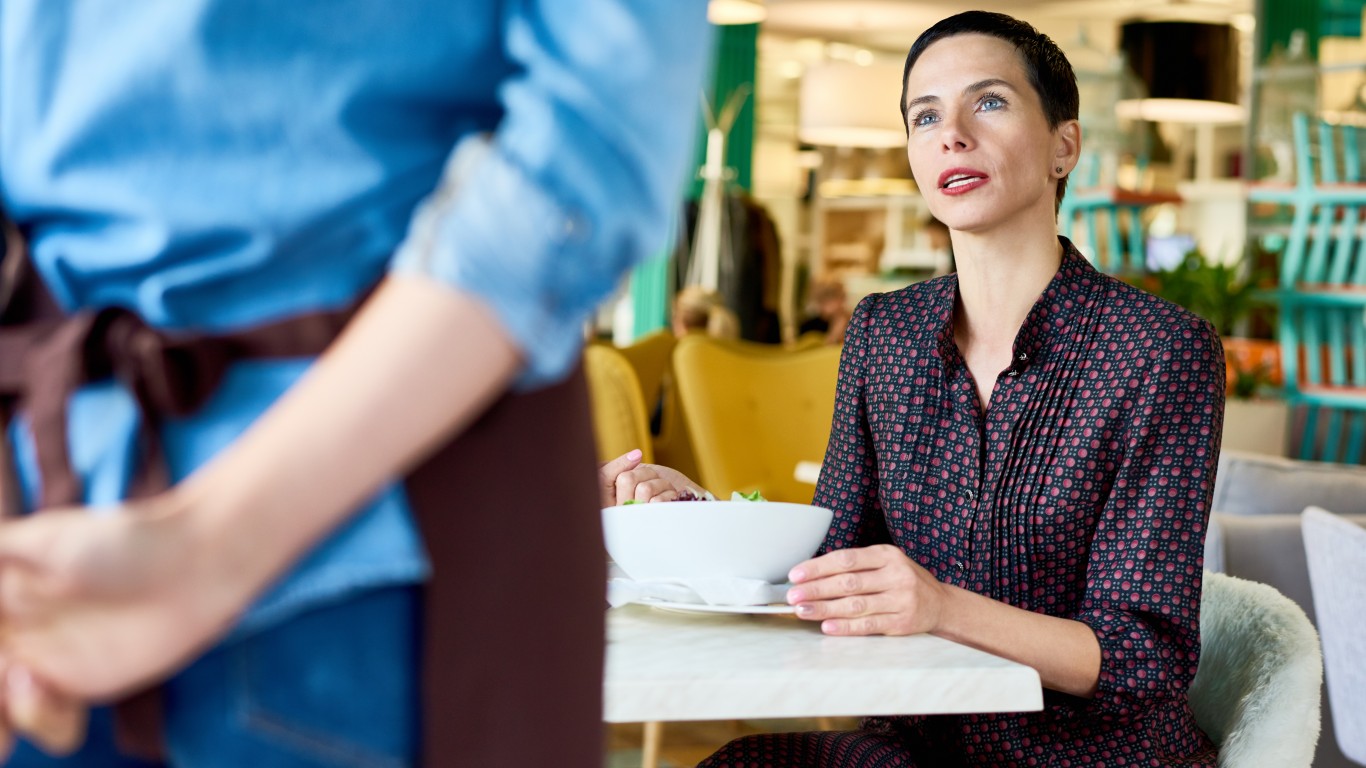
10. If something’s wrong, don’t make a scene
Dirty silverware? A worm on a lettuce leaf? The proverbial fly in your soup? Food not heated through, or vastly overcooked or undercooked? All very unpleasant — but loud exclamations or frantic gestures ruin everybody else’s dining experience. Just catch the server’s or manager’s eye and quietly and politely explain the problem.

11. Save the romance for later
People go to restaurants on dates — first dates, make-up dates, birthday or anniversary dates — and it’s always nice to see (and hear) them getting along. (You really don’t want to be sitting near a couple on a break-up date.) That said, there’s a reason that somebody invented the expression “Get a room!” Public displays of affection — anything more than a hug or a quick kiss — make everybody in the room (sometimes even one of the participants) uncomfortable. A discreet hand on a thigh under the tablecloth? Foot contact? Fine. But no making out (or more) at the table!
[in-text-ad]

12. Don’t talk about politics or religion
This is one of the oldest proscriptions on the books, and one that is probably increasingly hard to live by today. People feel passionately about the political situation in America today, one way or the other, and many also have strong feelings about religion. These matters can and should be discussed and debated, but the dinner table isn’t the place to do it. People come together to have lunch or dinner in order to relax and eat well and enjoy the company of their friends or family. Subjects that get the blood boiling — as these two certainly can — should be left outside the restaurant door.

13. Know how to position your silverware on the plate
The positioning of your knife and fork on the plate is a signal to the waiter. If you’re just taking a pause, place the knife across the top of the plate and the fork across the middle. If you’re finished and ready to have the plate cleared, place the knife and fork diagonally across the plate, the fork below the knife. If you’re using chopsticks, replacing them on the ceramic or wooden rest that’s usually provided also gives the signal that you’re finished.
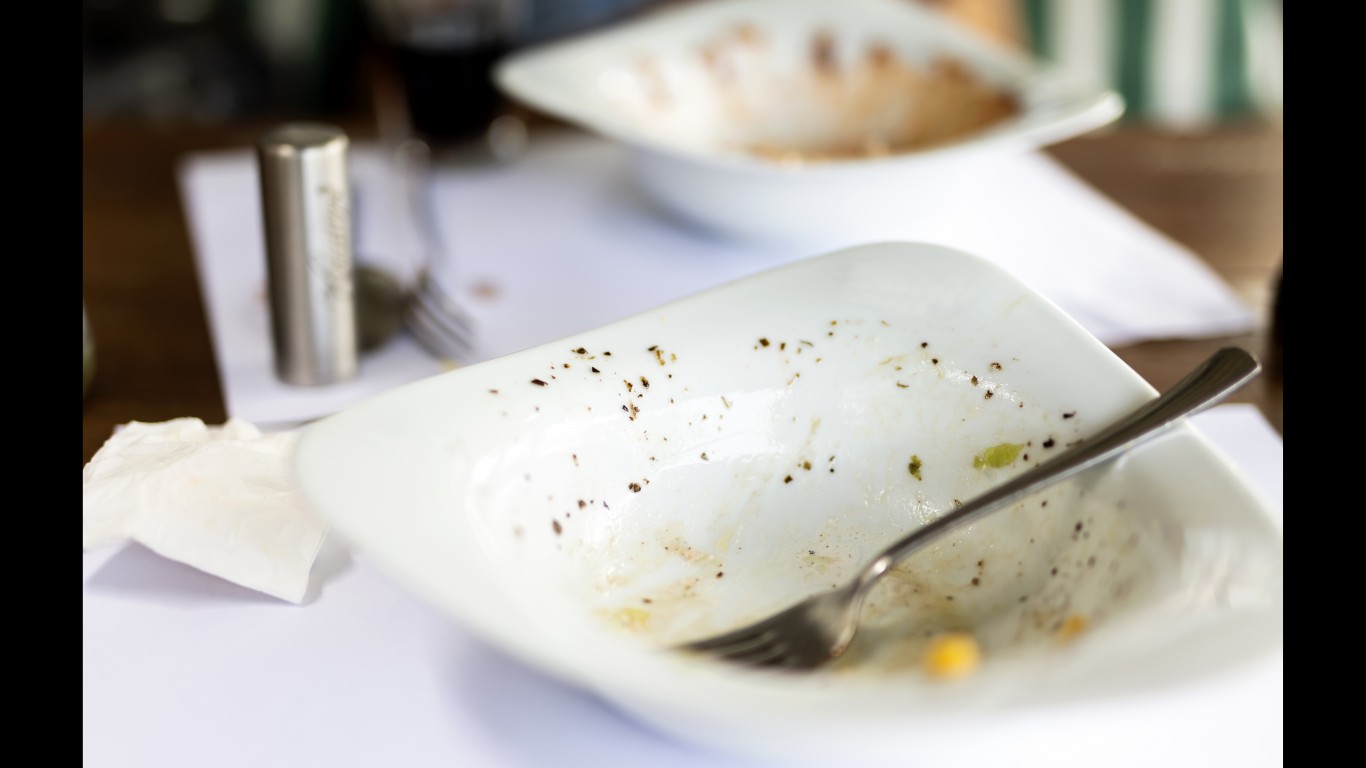
14. Don’t stack or push away your dishes
You’ll almost certainly be invading somebody else’s table space if you do, and, anyway, this isn’t a boarding house. Let the waitstaff do its job.
[in-text-ad-2]

15. Don’t use a toothpick or dental floss at the table
This one should be pretty obvious, too. Nobody wants to see you digging food particles out of your teeth while they’re dining. (If it’s a painful emergency, some consider it acceptable to use a toothpick with a napkin draped over your hand for camouflage — but it’s better to simply floss in the restroom.)

16. Don’t ask to split the check too many ways
There are check-sharing apps today that can make this piece of etiquette superfluous, but under other circumstances, don’t ask your server to divide the check more than two or three ways. If there are four or more of you, figure it out amongst yourselves. One solution is to appoint one person as cashier and let him or her figure out and collect each diner’s contribution. Or just pick up the check for one or two of your friends and let them reciprocate the next time.
[in-text-ad]

17. Don’t insist on adding up exactly what you ate and drank
There’s (at least) one in every big group of diners. “I had the green salad, which was $6.95, and one of the appetizer spare ribs, which were $12.95 for five, so that’s $2.59 for me, and the salmon, which was $20, but I only drank a glass-and-a-half of that $40 bottle of wine, so let’s say $15 — meaning that my portion of the check is $44.54. Do you have change?” Don’t be that person. A meal out with friends is a social occasion, meant to be enjoyed for the overall experience, not nickel-and-dimed. Unless the difference is really significant — you’re not feeling well so only had a cup of soup while everyone else had the $150 tasting menu, say, or your high-roller Wall Street buddy ordered the $300 bottle of cabernet and you only drink white — just pay an equal share and be thankful for a pleasant afternoon or evening.
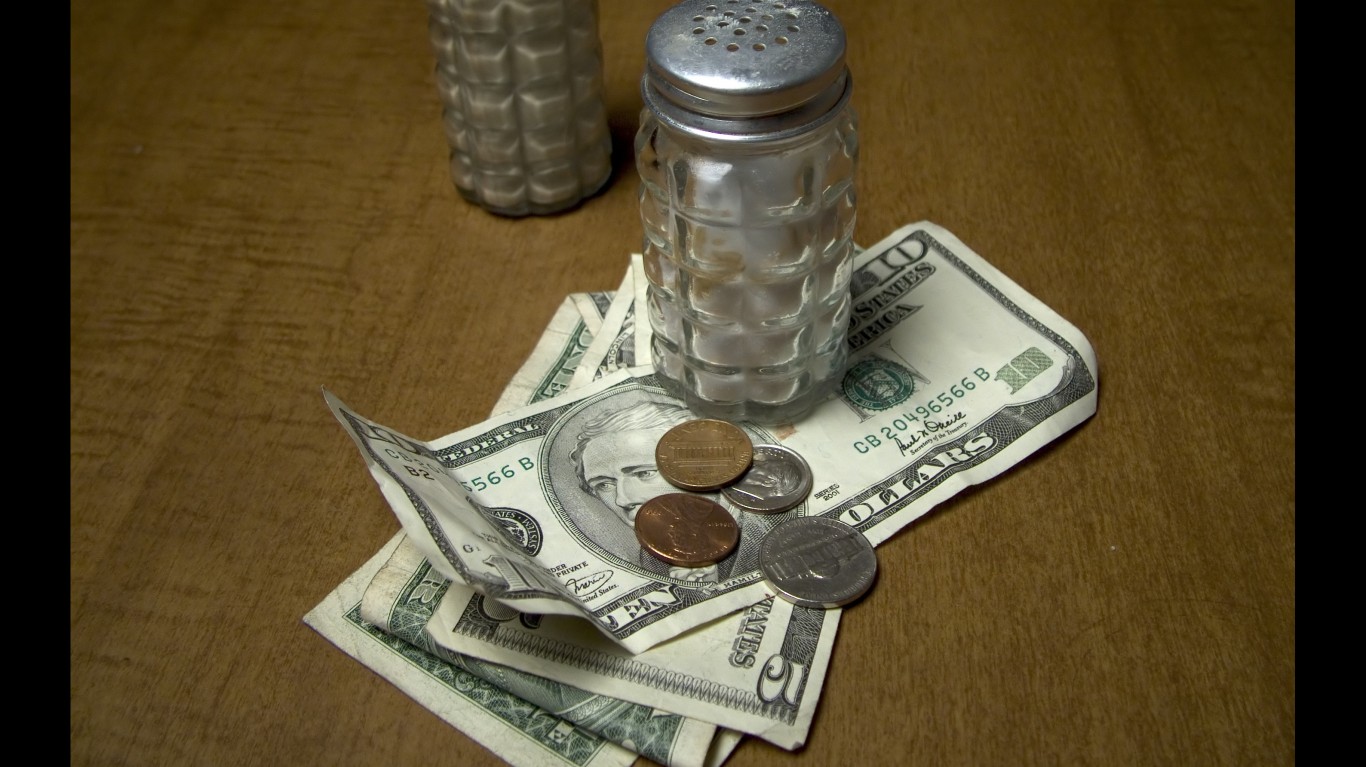
18. Tip generously
This is an issue that gets some people all riled up. They seem to resent having to pay extra for service, or think that 8 to 10% is sufficient. Some restaurants these days have raised their food and drink prices to accommodate a service charge to be shared among servers and other employees, so this isn’t an issue (though generous diners sometimes leave a little extra anyway). If this isn’t the case, remember that the server is only guaranteed a few dollars an hour in wages and that the tip is in effect his or her salary. Waiting tables is a demanding job, physically and otherwise, and most servers earn their money. As a general rule — and whatever some people might think about what servers actually take home — if you can afford to eat in a restaurant, the server probably needs that extra few bucks more than you do. What about tipping less for bad service? The impulse is understandable — but remember that a server who doesn’t take good care of you may not realize that the low tip is an expression of dissatisfaction. Better to tip modestly and then have a word with the manager if the service was really bad.
In 20 Years, I Haven’t Seen A Cash Back Card This Good
After two decades of reviewing financial products I haven’t seen anything like this. Credit card companies are at war, handing out free rewards and benefits to win the best customers.
A good cash back card can be worth thousands of dollars a year in free money, not to mention other perks like travel, insurance, and access to fancy lounges.
Our top pick today pays up to 5% cash back, a $200 bonus on top, and $0 annual fee. Click here to apply before they stop offering rewards this generous.
Flywheel Publishing has partnered with CardRatings for our coverage of credit card products. Flywheel Publishing and CardRatings may receive a commission from card issuers.
Thank you for reading! Have some feedback for us?
Contact the 24/7 Wall St. editorial team.
 24/7 Wall St.
24/7 Wall St.

